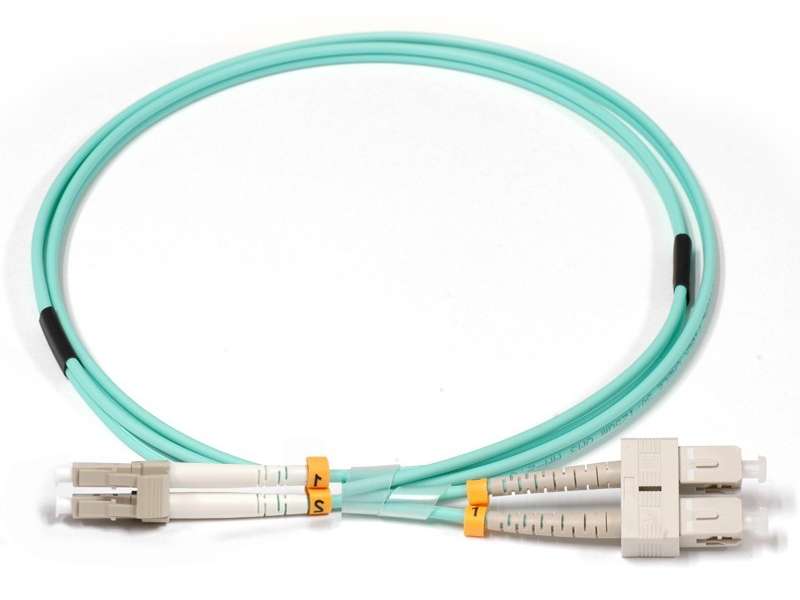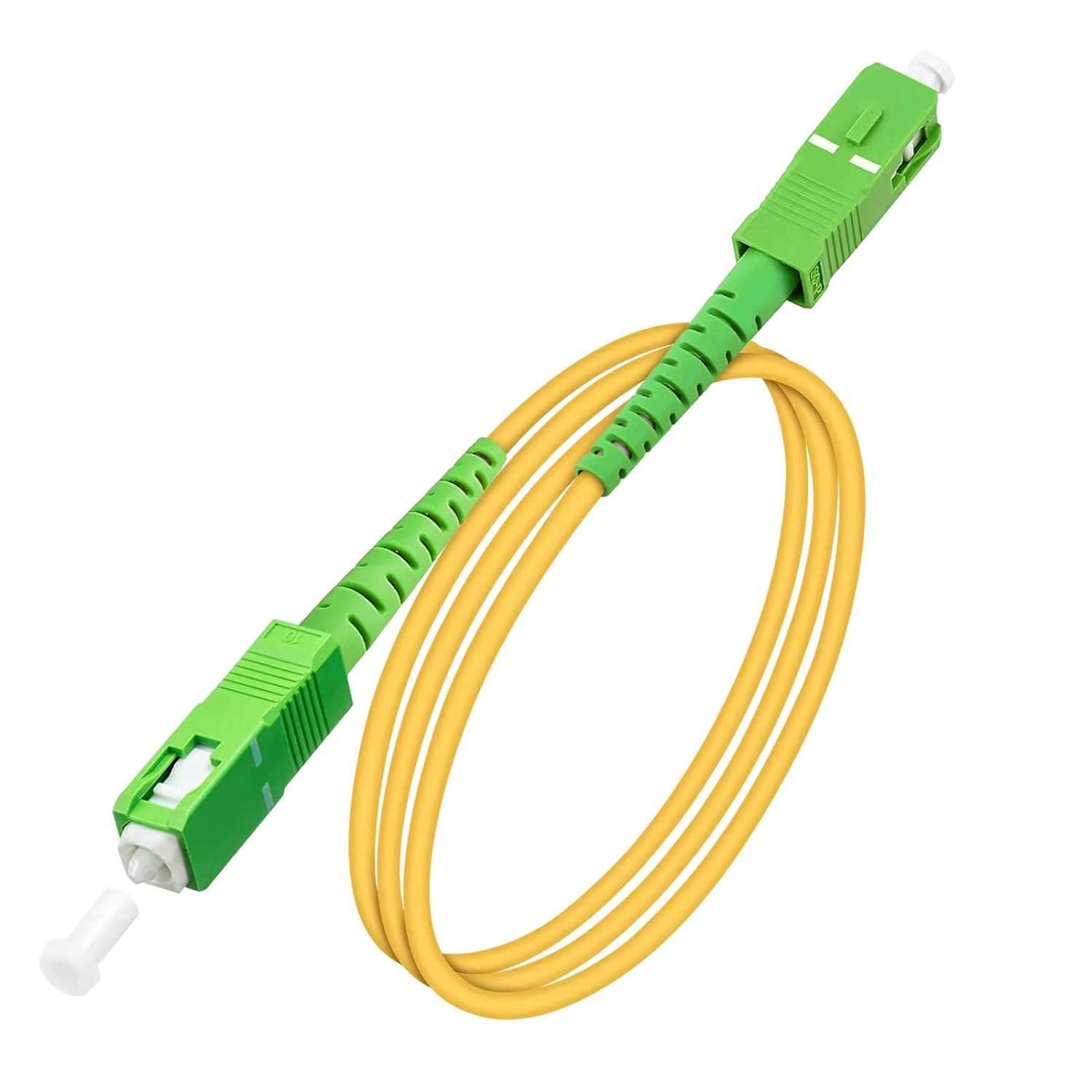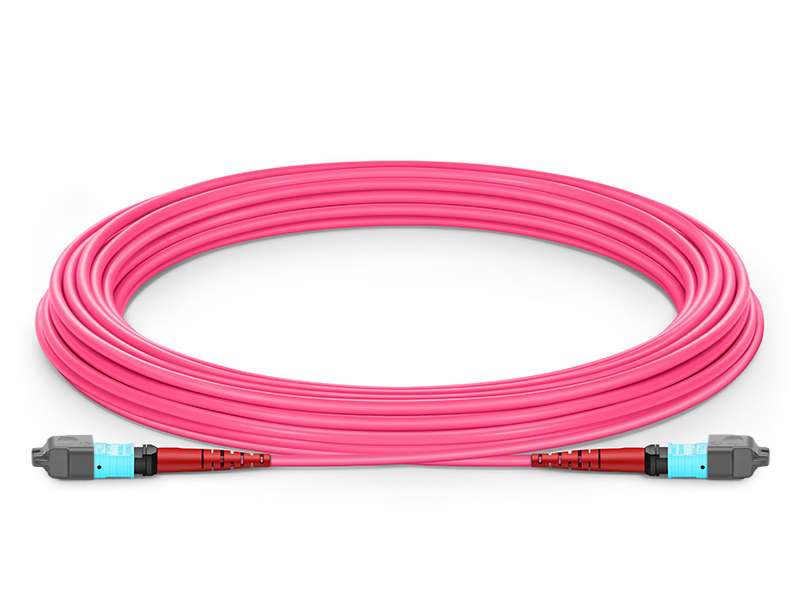Choosing the Right Optical Fiber Patch Cord

Understanding Optical Fiber Patch Cords
Optical fiber patch cords are essential components in fiber optic networks, serving as the physical link between devices. These cords consist of a fiber optic cable terminated with connectors on both ends, allowing for easy and reliable connections.
Selecting the right patch cord is crucial to ensure optimal performance and compatibility with your network infrastructure. Different types of patch cords offer varying characteristics, advantages, and limitations that must be considered.
This blog aims to provide professionals in the telecommunications industry, IT technicians, and individuals interested in fiber optic technology with valuable insights into choosing the right optical fiber patch cord. The tone of this blog will be professional and neutral, providing expert guidance on considerations, maintenance tips, and troubleshooting techniques for optimal performance.
Types of Optical Fiber Patch Cords
When it comes to optical fiber patch cords, there are two main types: single-mode and multimode. Each type has its own unique characteristics, benefits, as well as applications and limitations.
Single-mode patch cords
Single-mode patch cords are designed to transmit a single ray of light along a narrow core. This type of patch cord is ideal for long-distance transmissions due to its low signal attenuation and high bandwidth capabilities. Single-mode patch cords are commonly used in telecommunications networks, data centers, and long-haul applications.
The benefits of single-mode patch cords include their ability to support higher transmission speeds and longer distances compared to multimode patch cords. They also offer better signal quality and lower dispersion levels. However, single-mode patch cords tend to be more expensive than their multimode counterparts.
It's important to note that single-mode patch cords have limitations when it comes to short-distance transmissions or applications that require large amounts of data over short distances. In these cases, multimode patch cords may be a more suitable choice.
Multimode patch cords
Multimode patch cords are designed with a larger core diameter, allowing multiple rays of light to propagate simultaneously. This type of patch cord is commonly used in LANs (Local Area Networks), shorter distance transmissions, and applications where cost-effectiveness is important.
The benefits of multimode patch cords include their lower cost compared to single-mode options and their ability to support high-speed data transmission over short distances. They are also more forgiving when it comes to alignment issues during installation.
However, multimode patch cords have limitations when it comes to longer-distance transmissions due to higher signal attenuation and modal dispersion. They may not be suitable for applications that require high bandwidth or long-haul connectivity.
Understanding the characteristics, benefits, applications, and limitations of both single-mode and multimode patch cords will help you make an informed decision when choosing the right patch cord for your specific needs.

Considerations for Selecting the Right Patch Cord
When selecting the right patch cord for your fiber optic network, there are several important considerations to keep in mind. Two key factors to consider are cable length and connector type, as well as bandwidth requirements and transmission speed.
Cable length and connector type
The cable length plays a crucial role in determining the performance of your fiber optic network. It's essential to choose a patch cord that is long enough to reach the desired connection points without excess slack. Excessive cable length can lead to signal loss and increased attenuation.
In addition to cable length, considering the connector type is vital for compatibility with your network equipment. Common connector types include LC, SC, ST, and MPO/MTP connectors. Each connector has its own advantages and suitability for specific applications. For example, LC connectors are small form-factor connectors suitable for high-density environments, while SC connectors are widely used in data centers.
Bandwidth and transmission speed
Understanding your network's bandwidth requirements is crucial when selecting a patch cord. Different applications require varying levels of bandwidth capacity. It's important to choose a patch cord that can support the required bandwidth without causing bottlenecks or signal degradation.
Matching the transmission speed with the capabilities of the patch cord is also essential. Higher transmission speeds require patch cords with better performance characteristics such as low insertion loss and high return loss. Ensure that the selected patch cord can handle the transmission speed required by your network infrastructure.
Considering these factors will help you select a patch cord that meets your specific needs in terms of cable length, connector type compatibility, bandwidth requirements, and transmission speed capabilities. Taking these considerations into account ensures optimal performance and reliability in your fiber optic network setup.
Maintenance and Troubleshooting Tips
To ensure the optimal performance and longevity of your optical fiber patch cords, proper maintenance and troubleshooting techniques are essential. This section will provide you with valuable tips on handling, storing, cleaning, as well as troubleshooting common issues.
Proper handling and cleaning
When it comes to handling patch cords, it's important to follow best practices to avoid damage or contamination. Always handle patch cords by the connectors rather than pulling on the cable itself. Avoid excessive bending or twisting that can cause stress on the fibers.
Proper storage is also crucial to prevent damage. Coil excess cable length loosely to avoid kinks or bends that can affect signal quality. Store patch cords in a clean and dry environment away from dust or other contaminants.
Regular cleaning of patch cord connectors is necessary to maintain optimal performance. Use lint-free wipes and approved cleaning solutions specifically designed for fiber optics. Gently wipe the connectors in a straight motion, avoiding circular motions that can cause scratches.
Troubleshooting common issues
Connectivity problems are common in fiber optic networks, but they can be resolved with proper troubleshooting techniques. When faced with connectivity issues, start by checking the physical connections for loose or improperly seated connectors. Ensure that all connections are secure and properly aligned.
Signal loss is another issue that may arise in fiber optic networks. It can be caused by factors such as dirty connectors, excessive cable length, or damaged fibers. Cleaning connectors and ensuring proper cable length can help mitigate signal loss.
Other performance issues like high insertion loss or low return loss may require further investigation. Using specialized tools such as an optical power meter or an OTDR (Optical Time-Domain Reflectometer) can help identify the source of the problem.
By following these maintenance tips and employing effective troubleshooting techniques, you can ensure optimal performance and reliability of your optical fiber patch cords in your network infrastructure.

Conclusion
Choosing the right optical fiber patch cord is crucial for ensuring optimal performance and compatibility in your fiber optic network. By understanding the different types of patch cords, considering factors such as cable length and connector type, and matching bandwidth requirements with transmission speed capabilities, you can make an informed decision.
Additionally, proper maintenance practices, including handling, storing, and cleaning patch cords, will help maintain their performance over time. Troubleshooting techniques can also be employed to address common issues such as connectivity problems or signal loss.
By following these considerations and tips, you can maximize the efficiency and reliability of your fiber optic network while minimizing downtime and potential performance issues. Selecting the appropriate patch cord and implementing proper maintenance practices will contribute to a successful and robust fiber optic infrastructure.
See Also
Choosing the Right Quick Assembly Connector: Tips and Advice
Building Reliable Network Infrastructure with Fiber Patch Cords
Discover the 8 Core Fiber Optic Terminal Box
Understanding Different Types of Fiber Optic Adapters: A Comprehensive Guide
Key Considerations for Choosing Field Pre-installable Connectors
About US
Follow Us
AnetFiber company's main products are indoor and outdoor optical fiber cables, outdoor waterproof pre-connected fiber-to-the-home products, PLC optical fiber splitters, optical fiber jumpers and pigtails, MTP®/MPO high-density big data product solutions, optical fiber field quick connectors and research and development molding, injection molding and production of optical fiber distribution boxes, optical fiber chassis cabinets, the market has expanded to the world, Europe, America, Asia, the Middle East and Latin America.
Address
Shenzhen City, Baoan District, Yanluo Street, Tangxiayong Community, Yangyong Industrial Road, Tonggangda New Energy Vehicle Park 406
Contacts
+86 199 2655 3586

